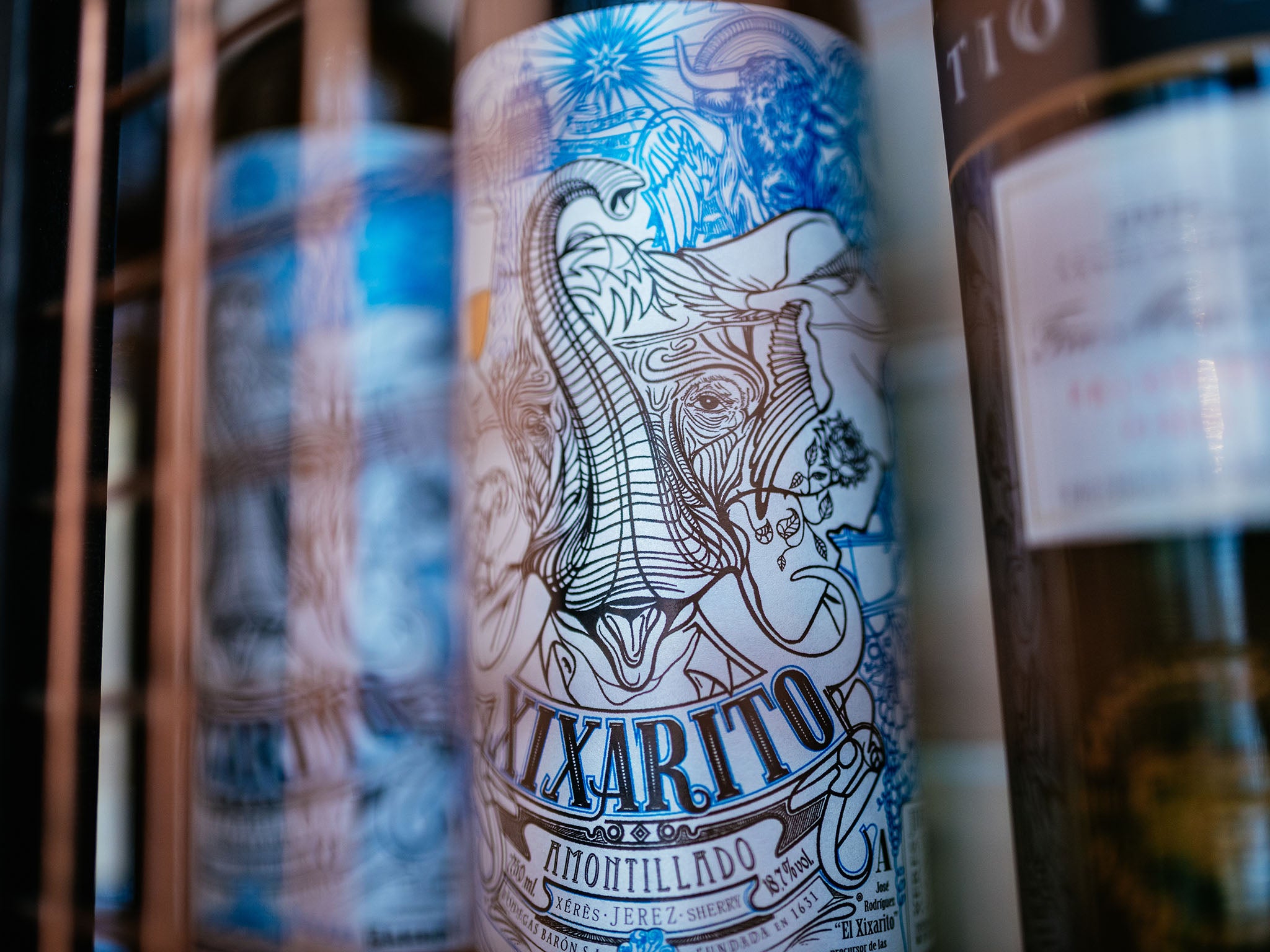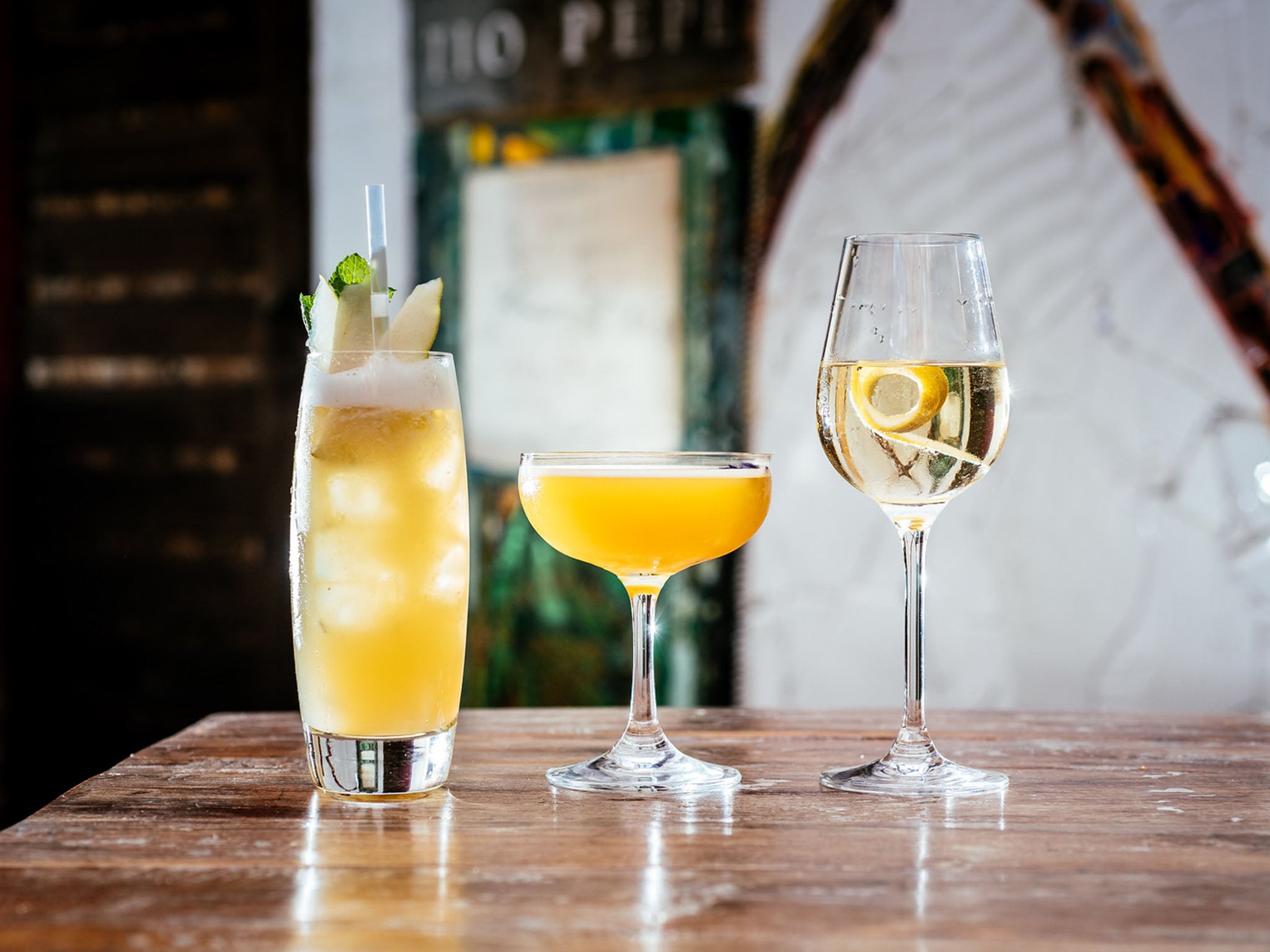Why sherry is no longer just a Christmas drink for your grandma
The sherry-producing world is hoping it’s shaken off its fusty image, with young aficionados in the UK and Spain set to boost the industry’s growth after some lacklustre years, says Philip Sweeney

“Oh, there was talk about the grannies even back in the Seventies,” Beltran Domecq, epitome of old world Andalusian elegance in a green three-piece suit and raffish orange tie and pocket handkerchief, is talking in his precise Oxford English about a problem the sherry world hopes it’s finally cracked, namely its fusty image. Beltran Domecq is president of the Consejo Regulador, the body which governs the sherry industry, and also a senior member of the biggest, oldest and most distinguished of the great Jerez wine dynasties.
We’re in Domecq’s spacious office overlooking Jerez’ Avenida Alvaro Domecq in Cadiz, where municipal workers are hanging Christmas lights in the tall palm trees. The avenue is named after his late uncle, mayor of Jerez and famous rejoneador – a horseback bull-fighter (horse and bull breeding are traditional pursuits of the sherry aristocracy). We’re talking about the family company Pedro Domecq, long run by another uncle, Jose Domecq, a polo-playing Anglophile wine expert, known universally as “The Nose”, both for his fearsome aquiline hooter and its legendary powers of aromatic analysis.
The granny problem – the image of sherry as an annual treat for oldies drunk unchilled from a long-kept bottle at Christmas – was of special gravity in the UK, until recently the biggest consumer of sherry, and now second world market after Spain. It’s a problem the Consejo Regulador and the individual producers have been addressing via energetic promotion such as the International Sherry Week, now in its fifth year.
In the UK, much work has focused on encouraging the consumption of the lighter dry sherries manzanilla, fino and amontillado, Spain’s own favourites, drunk chilled, rather than the sweet cream varieties beloved of caricature grannies, and always as accompaniment for food. The biggest subject in the sherry world is food pairing, with star chefs brought in for demonstration meals at festivals and the sumillers of upmarket restaurants like La Carbona and Lu deploying ever longer and more recherché wine lists.
The result of sherry’s assiduous promotion has been a steady buzz in British food circles for several years now about the drink’s excellence and undervalued price, and an increasing number of sherry-focused bars.
Karen Jaen of market leader Gonzalez Byass talks about them over glasses of fino in a flamenco bar – flamenco is intimately bound to sherry, with the heartlands of early gypsy flamenco coinciding exactly with the sherry route of southern Andalusia.

Jaen has just come from fomenting business for Gonzalez Byass in London, encouraging new bars like the seminal Sack Bar in Finsbury Circus to redouble their efforts with the sherry flights, the zany sherry cocktails – Disco Daiquiri, Fina Colada – and the authentic atmosphere.
In Andalusia, sherry drinking never went away, but it did decline dramatically, and the old bulls and horses image has had to be countered by a similar Spanish rejuvenation campaign. The traditional tabanco taverns of Jerez, fashionable again and proliferating, now contain not just thick accented rough-hewn fino drinkers wolfing croquetas, but smart young professionals.
An enormous relief no doubt to a region and an industry still struggling to emerge from decades of unemployment, during which the sherry trade shrank catastrophically. Mauricio Gonzalez Gordon, head of Gonzalez Byass, recently declared that sherry had not only turned the corner to but was set to achieve growth of 18 per cent over the next three years – but only in the crucial new sector of high end specialist wines, because the low price, high volume market which flourished during the granny years is still going down the pan.
Gonzalez Byass, the biggest and most dynamic of the traditional sherry houses, is the only major still in the hands of the family which founded it, 180 years ago. The majority, Domecq included, have spent the past 20 years changing hands in a morass of takeovers and sales among multinationals.
Driving down to Jerez you pass Gonzalez Byass sentinels on the hilltops, in the form of the big Tio Pepe silhouettes advertising the company’s most famous brand. On the edge of town is the Tio Pepe roundabout, topped by a giant metal figure with its guitar and sombrero, the first registered trademark in Spain.
Until recently, the roundabout was bordered by a low wall, the ironically nicknamed muro de los caidos – wall of the fallen – bearing the names of all the old sherry houses gone under in the great sherry bubble and financial scandal which wrought havoc in Jerez in the 1990s. Chief instigator of this, the late Jose Maria Ruiz Mateos, the Robert Maxwell of Jerez, is still providing work for lawyers and prison staff three years after his death following the spectacular implosion in 1987 of his vast empire of bought-out companies overproducing ever cheaper sherry as a scam to grab government subsidies.
Slump and havoc are not the words brought to mind by the huge and immaculate Gonzalez Byass bodega precinct, with its beautiful white and ochre buildings connected by cobbled vine-shaded lanes, its vast cavernous interiors full of spacious alleys of black oak barrels, stacked in the solera system whereby newer higher barrels are constantly blended into the older lower casks, providing the uniform non-vintage products which characterise sherry. In a great white modern reception hall, visitors taste the ever evolving range of new bottles, constantly created both to generate the news value lacking due to the absence of new vintages in sherry, and to pursue the growth of finer, more upmarket wines.

You don’t need to go to Jerez to taste these products. Early November, Martin Skelton, head of Gonzalez Byass’ UK operation, hosts a sherry pairing dinner in the vault-turned-private dining room of a new bar-restaurant in a former Victorian bank in Clifton, Bristol.
This is one of the most sherry-historic cities in the UK, and Bar 44 (in Cardiff and Bristol), its latest contender, is the fourth of a group of Spanish-themed restaurants belonging to the Welsh-born sherry fanatic brothers Tom and Owen Morgan. In the tiled and muralled bar area, the long bar offers sherry flights to customers, while down in the vault Skelton talks the guests through a succession of unusual wines.
There’s Tio Pepe en rama, the newly fashionable unfiltered style equivalent to natural wine, to accompany tempura oysters, Tres Palmas fino, from a new highly select limited batch, with quince-glazed duck and morcilla, rare old palo cortado with cheese and rich dark aged Matusalem with pudding. Refined and modern stuff. If there’s a granny in the joint, she’s keeping a low profile tonight.
Nonetheless, Bristol is deeply implicated in the old sherry image, and the whole dramatic cycle of Jerez boom and bust. Centre stage, the August two-centuries-old family firm of Harveys, whose product Bristol Cream, a cleverly blended and brilliantly marketed dark sweet sherry, rocketed to world sales dominance in the 1970s and 1980s. And contributed unwittingly to the early career of the villain Ruiz Mateos, by granting him the credit-securing prestige of a long-term supply contract.
The great Harvey heritage is nowadays much depleted, with the firm now owned, along with Pedro Domecq, by a Filipino brandy magnate. In Jerez, the massive gates of Harveys’ old bodega complex are locked and silent, while production is located in the magnificent Domecq bodega, now named confusingly after the brandy firm Fundador.

In Bristol, Harveys’ historic Denmark Street premises now house a Chinese restaurant. John Harvey the fifth, the last family member to run the firm, a sort of distinguished English Domecq, though less flamboyant in the nose and tie departments, is long retired. In his Mendip stone country house he recalls his Cambridge days when tutorials would always start with a glass of sherry. Harvey looks unimpressed at the news that his old family firm has just relaunched Bristol Cream, still a massive seller outside Spain, with a new retro Bristol blue bottle and a campaign to emphasise its chilled – literally – and fashionably modern qualities.
Around Jerez, the bodegas’ finest bottles are on display beside legs of luxury jamon to lure the Christmas spenders. The first zambombas – boisterous sherry-fuelled flamenco carol parties – have started, not least in the bodegas. All questions are still open. Will Bristol Cream pull off a surprise outflanking manoeuvre and grab some of Tio Pepe’s new youthful aficionados?
And above all, what to drink at Christmas if you’re neither a granny nor entertaining one? The imperturbably authoritative Beltran Domecq has the answer. “With roast turkey, I would highly recommend an amontillado.” And if that’s good enough for The Nose’s nephew, we need enquire no further.
Join our commenting forum
Join thought-provoking conversations, follow other Independent readers and see their replies
Comments
Bookmark popover
Removed from bookmarks